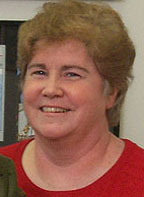 Prepared by
Prepared by
Sandra S. Bastin, PhD, RD, LD
and
 Kathy Daly-Koziel, RD, MPH, LD
Page 2 of 4
Kathy Daly-Koziel, RD, MPH, LD
Page 2 of 4
Cleaning, or the removal of visible
soil or food from a surface is the first step towards a sanitary
kitchen. Wash surfaces and utensils with a detergent solution
and rinse with water. Sanitizing, or the reduction of microorganisms
to a safe level, is the next step towards a sanitary kitchen.
|
|
A
Food Safe Kitchen
Good personal hygiene is the best protective measure against
foodborne illness. Frequent and thorough hand washing with hot
soapy water is the best defense. Be sure and read the Hand Washing
Section located elsewhere in the curriculum, to learn the proper
method. A hand sanitizer should not be a substitute for hand
washing. To get young children in on the action, have them sing
a song, such as the ABC song or Happy Birthday. This is about
how long it takes to wash their hands, and it becomes a fun activity.
Come up with other songs that are about 20 seconds long!
Cleaning, or the removal of visible soil or food from a surface
is the first step towards a sanitary kitchen. Wash surfaces and
utensils with a detergent solution and rinse with water. Sanitizing,
or the reduction of microorganisms to a safe level, is the next
step towards a sanitary kitchen. Sanitizing is usually done by
using two tablespoons of household bleach per gallon of warm
water. Allow dishes and utensils to air dry. When putting dishes
and utensils away, always handle eating utensils properly. Never
touch any surface that will come in contact with the user's mouth.
Use plastic or other non-porous cutting boards. They can be run
through the dishwasher or washed in hot soapy water and rinsed,
after each use. Paper towels make the best wiping cloths. If
you use cloth towels, and have children in the house, consider
using color coded ones. The blues ones could be for drying off
hands and the white ones could be used to clean up spills. This
way you wouldn't clean up a spill and then wipe your child's
face, possibly spreading pathogenic bacteria. Always wash cloth
towels on the hot water cycle of the washing machine after each
use.
There are several areas of the kitchen that are easy to overlook.
When was the last time you washed your can opener? The blade
working unit should be washed and rinsed after each use, whether
it's a manual or electric one. Give particular attention to the
sink, especially the openings to the drain. This should be wiped
down often. If you have a garbage disposal, this can become grungy
quickly. Periodically sanitize them by pouring down the sink
a solution of one teaspoon of chlorine bleach in one quart of
water (FDA Consumer, November, 1996).
Dispose of garbage as needed to prevent odor and to prevent attracting
pests. Store garbage in containers that have tight fitting lids
and that are easy to clean. Clean at least once a month and don't
forget to clean the handles. Since insects and pests can carry
harmful bacteria on their bodies it is best to control them.
Either keep them out, deprive them of food and shelter or kill
them. An insect or rodent infestation is considered a serious
health risk and a licensed pest control operator should be consulted.
Purchasing Food
The safety of the food supply is monitored from farm to the
point of sale. It is your responsibility to carefully select
foods from the store and then keep them safe until you use them.
Planning menus and organizing grocery lists to follow the flow
of the store aisles can help you organize the safest order in
which to pick up your perishable groceries. Here are some food
safety tips to get in the habit of doing while in the grocery.
- Canned foods should be free of dents, rust or bulging lids.
- Check that refrigerated foods feel cold and frozen foods
are solid with no signs of thawing. The packaging should be free
of holes or tears.
- Read the sell by and use by dates of perishable
foods. If the sell by date has passed, don't purchase
the product. The use by date applies to its use at home.
- Purchase perishable foods, such as meat, poultry and seafood
last. Consider using a plastic bag to enclose packages of raw
meat and poultry so juices won't accidentally spill on other
groceries.
- Meats contain Safe Handling Instructions. The label
shows and tells how to: safely store and thaw meat and poultry;
prevent bacteria from spreading; cook thoroughly and store leftovers.
Many food items have references such as these.
- In the check out line, pack cold foods together. They will
remain chilled longer this way. They'll also be easier and faster
to put away when you get home.
- Take groceries straight home to the refrigerator and store
them immediately. If travel time will exceed 30 minutes, pack
perishable foods in a cooler with chill packs. Store the cooler
in the coolest part of the car.
   [ LESSONS || SITE
MAP || LOCAL AGENTS || RESOURCES || PEOPLE ]
[ LESSONS || SITE
MAP || LOCAL AGENTS || RESOURCES || PEOPLE ]
Issued in furtherance of Cooperative Extension
work, Acts of Congress of May 8 and June 30, 1914, in cooperation
with the United States Department of Agriculture. The Louisiana
Cooperative Extension Service provides equal opportunities in
programs and employment. Information and Graphics on this site
are copyright protected by LSU Agricultural Center's Louisiana Cooperative Extension Services.
For more information
on the EFNEP program, contact EFNEPMail@agcenter.lsu.edu.
|